National Fruit Festival: Win with Fruits
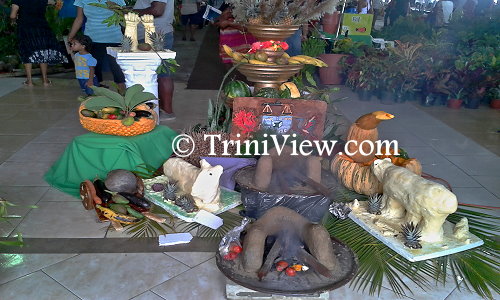
The Ornate Entrance
By Alana Lalman
June 24, 2014
On June 20th-22nd, 2014, the Tableland Pineapple Farmers Association of Trinidad and Tobago held its 3rd Annual National Fruit Festival with the theme, “Win with Fruits, Healthy and Nutritious can be so so Delicious” at the Nu Simplex Complex, New Grant in south Trinidad. According to the organisers of the Fruit Festival, the showcase was started in response to “a sort of western and northern brainwashing of our people that has happened to such an extent that we have lost a sense of ourselves as Trinbagonians.” The organisers have created this forum to address the issues associated with poverty, crime, non-communicable diseases (such as obesity and diabetes) and high food import bills in excess of billions.
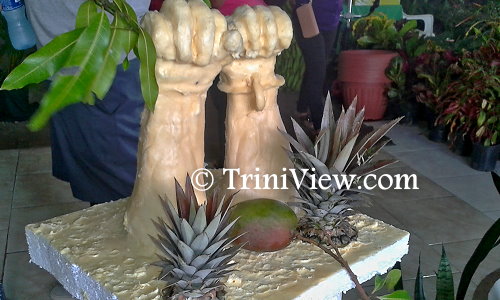
Carved hands
The entrance of the venue was a mix of fruits and vegetables carved and shaped into designs reflecting the natural environment. It was very impressive to say the least as pineapples formed pillars and arches and fruits were carved into animals. Also, the use of “chulhas” (earthen stoves) in the display at the entrance proved a success as many patrons stopped to take photographs.
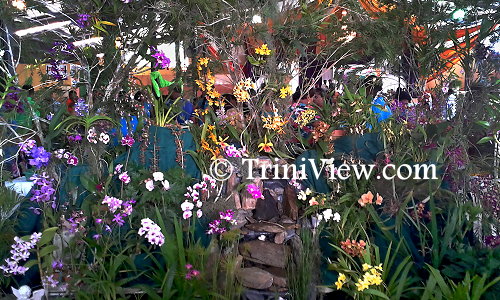
Orchid display
Immediately after the entrance was a colourful and spectacular arrangement of orchids set against a mock waterfall. The society also sold orchid plants at reasonable prices and was on hand to explain the types of orchids on the display booth as well as provide information how to best grow the plants. Further along the booths were seedlings of local and foreign plants such as basil, thyme, cilantro, peppers and others for only $1. It goes without saying that the booth enjoyed heavy traffic that day.
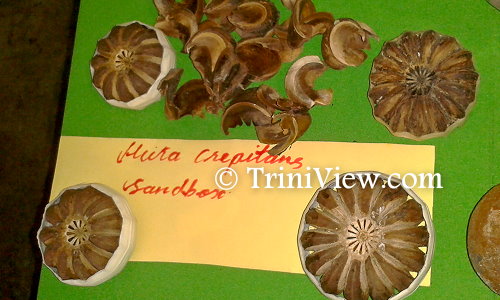
Sandbox
Very interesting and important displays were the tables that hosted a plethora of dried seed and fruit that one hardly sees nowadays. For example, the mora seed, mahogany, sand box and wild onion are some that I was aware of but had never seen. The hosts of the displays were very knowledgeable and some of them are conservationists of local flora on the islands. The Forestry Division, the Regional Corporation and the Pineapple Farmer’s Association also provided information regarding wildlife, nature conservation, plants and any other questions related to the flora and fauna of Trinidad and Tobago. In addition, there was blood sugar testing, blood pressure testing and a few other health checks available for interested patrons.
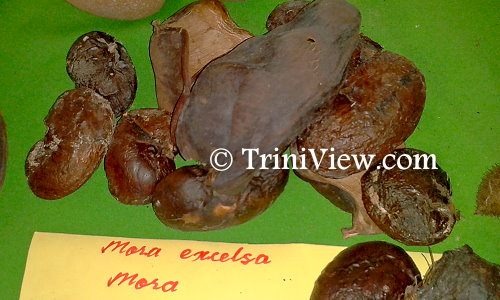
Mora
Many of the booths were from local businesses that sold food products using local produce. There were a few vendors that sold local chocolate and cocoa powder, with one offering chocolate barfi that had such a rich sensation of flavours. Local wines abounded, with flavours like pommerac, mango and pineapple. Fresh fruit was generously piled onto skewers and served as kebabs. Pineapples were on sale for very reasonable prices. A new favourite of mine is the local jaggery, its unrefined sugar that forms into little crystallized pieces. While the flavour was intense and sweet, the vendor assured us that this was healthier than honey! In addition to edible products, soaps and bath oils smelled as though they could be eaten. There were soaps with infusions of lemongrass, cocoa tree, coconut, mango, rosewater, tea tree oil among a wide variety of delicious scents.
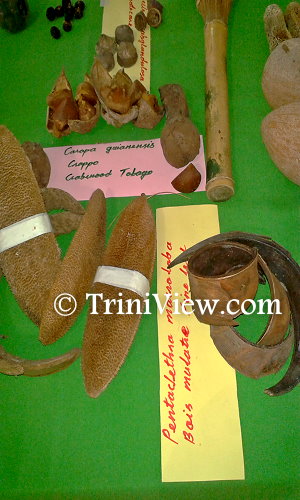
Crappo and pine nut
The main highlight for a lot of participants was the assortment of flora on sale. La Vega, a local plant estate in Gran Couva was also on hand with a large number of plants for sale, mango, miracle fruit, pommecythere, lemon and citrus trees. Smaller booths also sold a mixture of decorative plants like cactus and croton and edible plants as well. The plants were especially a top seller as June is the start of the rainy season:one of the best times for planting.
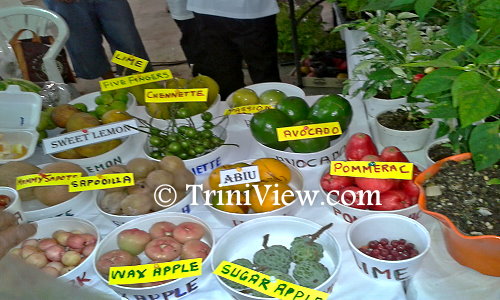
Choose your fruit
Children and adults alike were entertained as the Association carried a program that day that included speeches, skits and games. To cool the heat, the sugarcane juice vendor was my last stop before I left the venue. He had the sugarcane extractor behind the stall and he showed us how he used it to extract the juice. If you have not had fresh squeezed cane juice added to pineapple juice and cinnamon powder, you are really missing a treat! Witnessing the impact of this festival, it was apparent that there was sincere interest by patrons. There is the view that local fruits are too expensive and that is what drives them to buy foreign fruits. However, the festival provided trees at a reasonable cost for participants to purchase. It created dialogue on the need to grow more local foods and in turn, promote a sustainable food economy. The festival allowed sampling of some varieties of fruit and plants that are rarely seen in the public domain, like wax apple (a smaller pommerac), roucou and jackfruit.
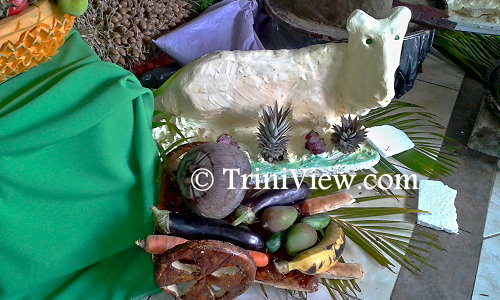
Fruit display
This event was quite a novel way to emphasize the importance of plants, fruits and agriculture in general. The school tours were a great idea to involve children in this process. It was very well organised as manoeuvring through the booths showed that planning took place as booths were arranged in some order. The venue was not equipped with fans and therefore quite humid. Also inadequate were parking facilities as there was no on hand security to direct vehicles for parking. Perhaps the event venue was out of the way for some patrons, but the outcome was well worth the effort of driving.
I would love to see the event occur more than once per year, twice or more is better!